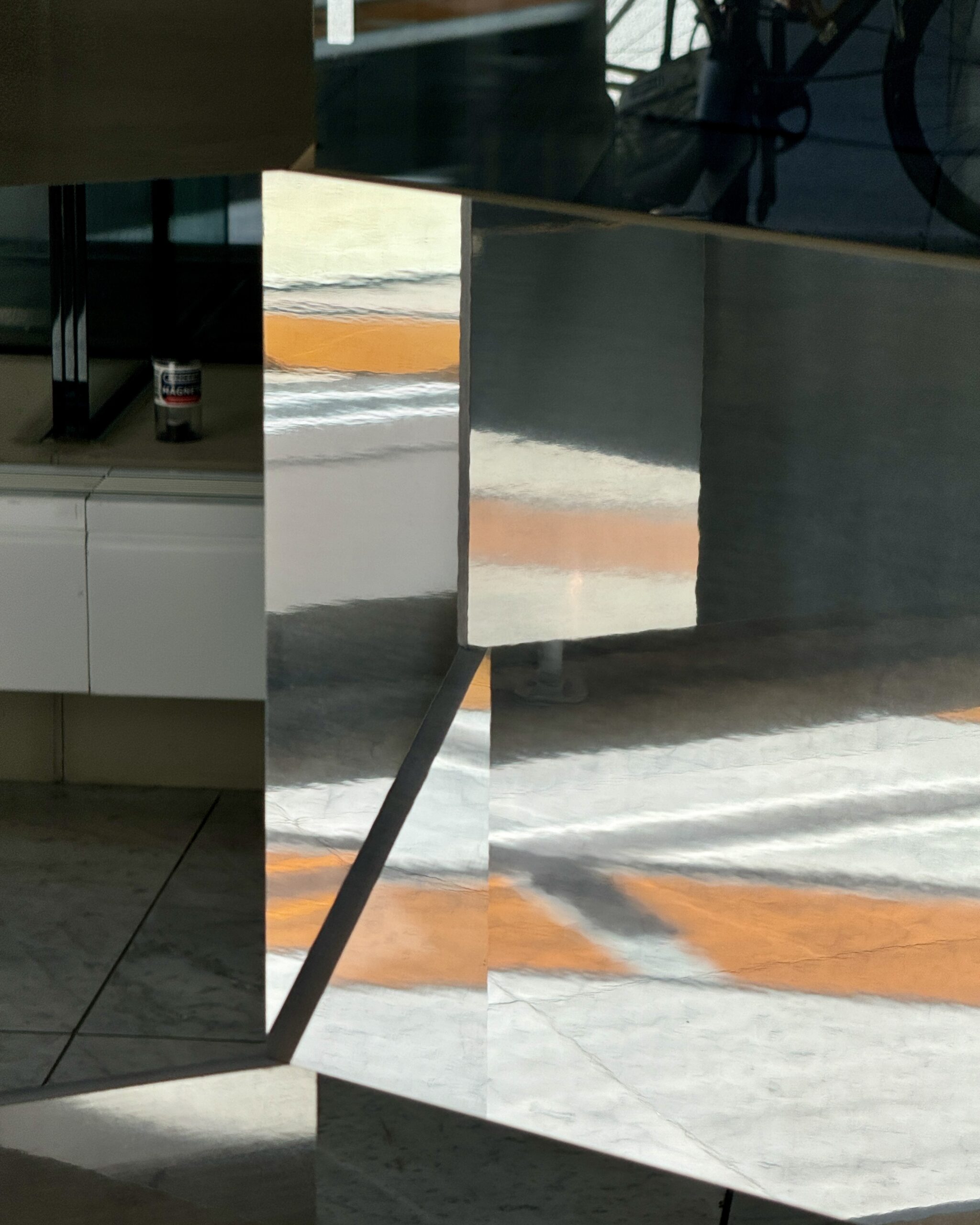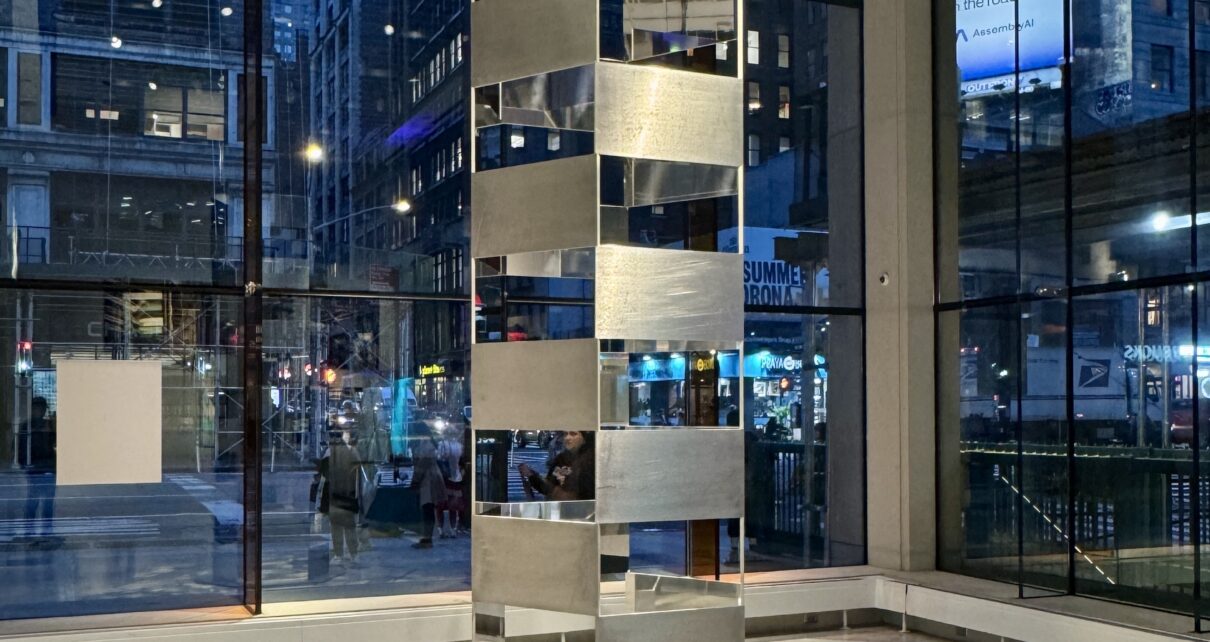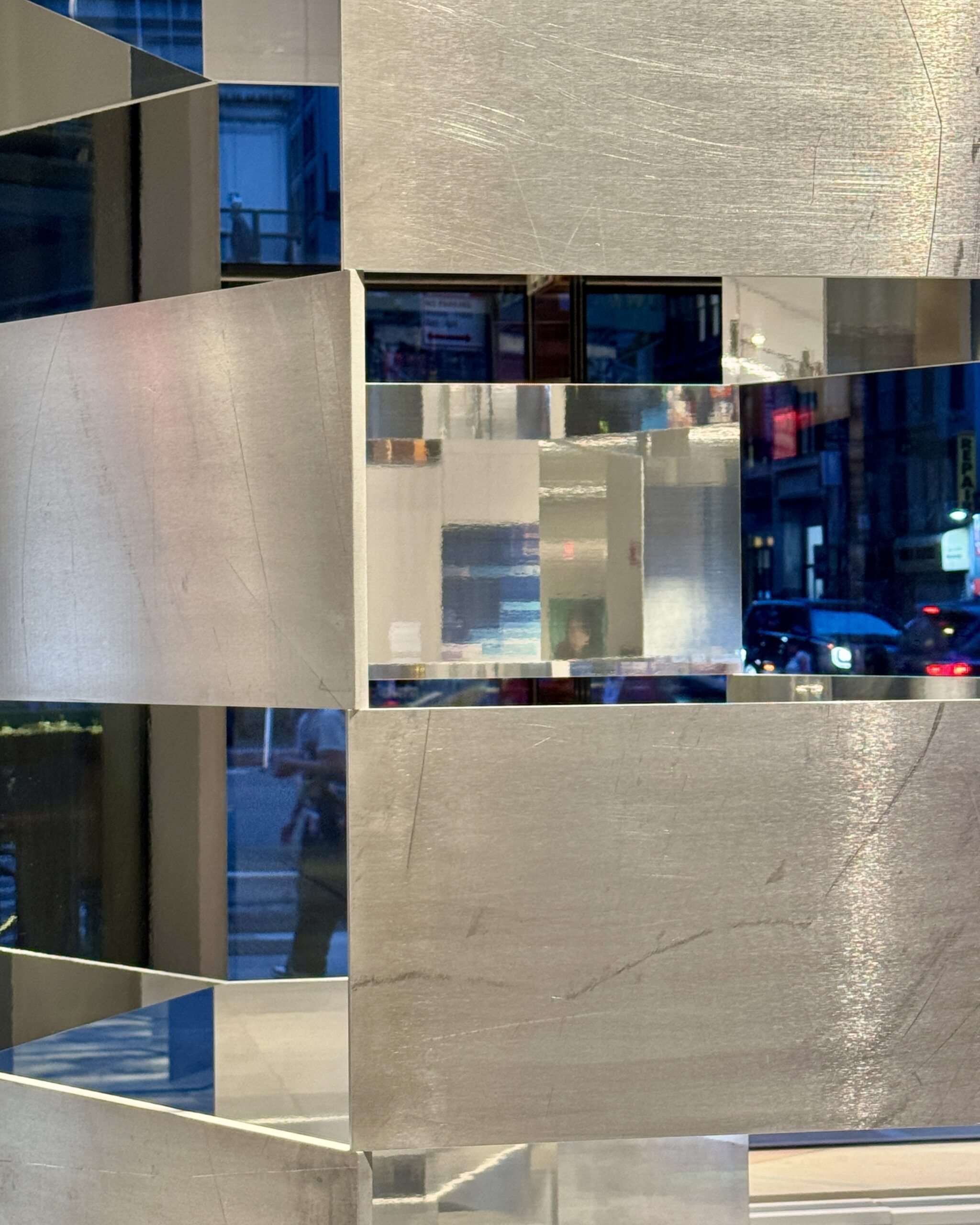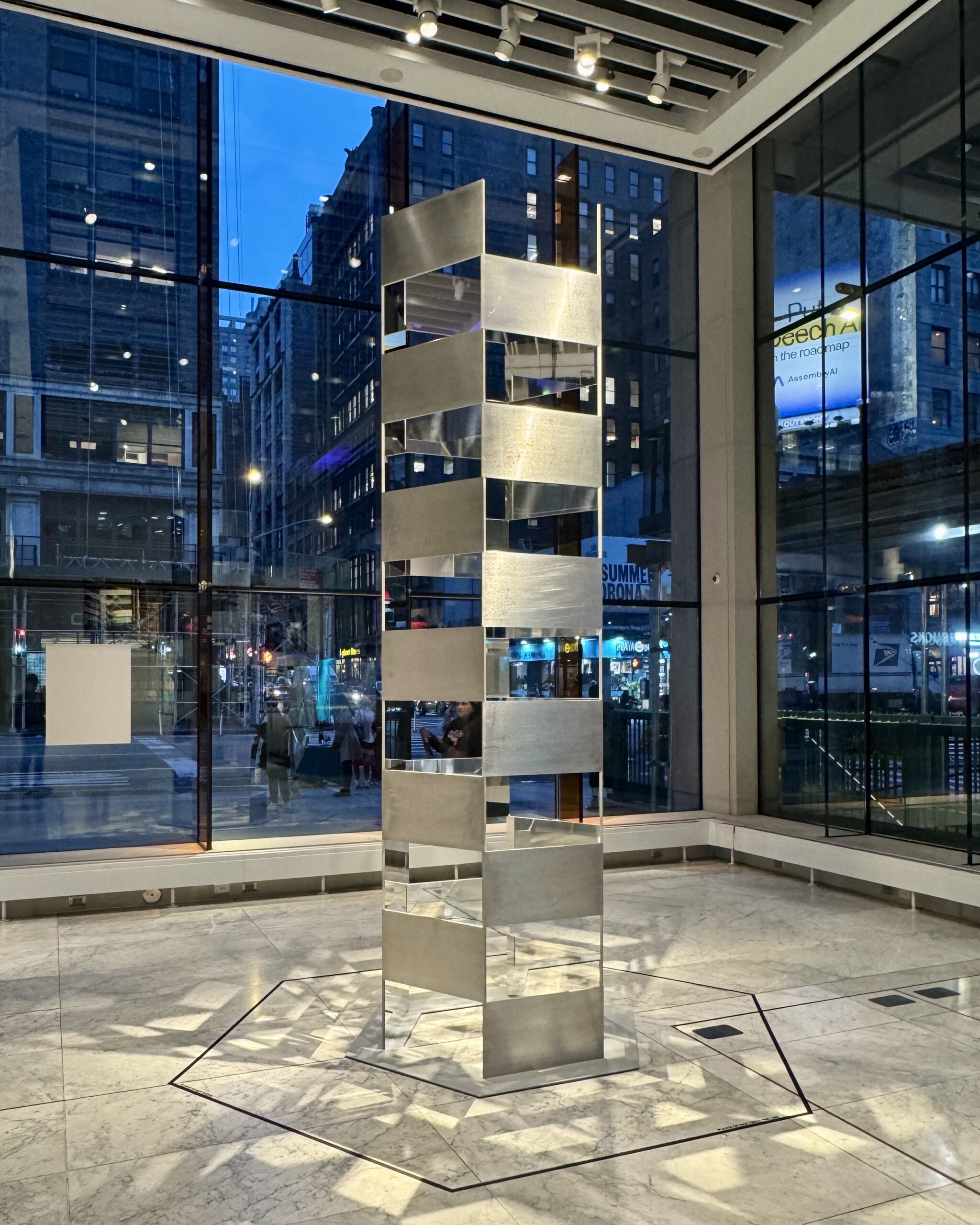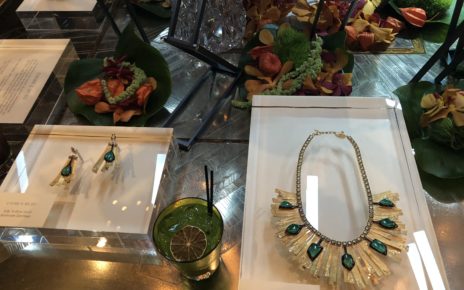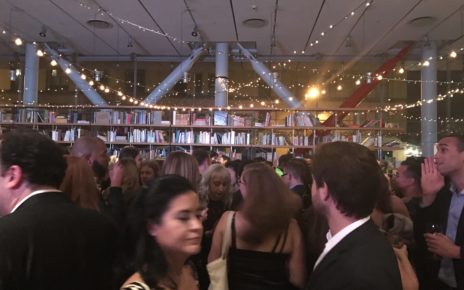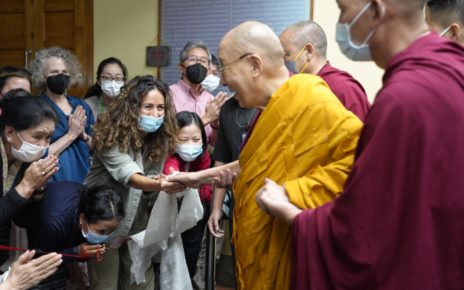Seth Howe’s artistry is a prime example of the harmonious relationship between architecture and art. From a young age, Howe knew he wanted to be an architect, despite having no personal connections to the field and growing up in a household that appreciated education but not the fine arts.
“Looking back, it makes sense that I pursued architecture—not for stylistic or theoretical concerns, but for my relationship with space and my sense of self within it,” he reflects.
His recent installation The Mechanism of Seeing, included in a group exhibition, called Picturing Light at the Fashion Institute of Technology, showcases these principles. Positioned in a corner window at FIT, the 12-foot-tall sculpture captures reflections of the bustling street outside, while also reflecting the gallery’s interior. As viewers move around the piece, they encounter shifting fractalized reflections of both the city and themselves, prompting a constructive dialogue between the artwork and its context. Howe describes the experience:
“Sometimes the sculpture is almost invisible; other times, it’s very clear in terms of its presence. It’s definitely an urbanistic piece.”
Ultimately, Howe seeks to inspire a deeper connection with perception, prioritizing engagement over specific emotional responses. “Some will pass by and not fully understand, while others will engage deeply. My intention is to encourage active participation in experiencing the piece. In today’s art scene, many viewers are passive, looking to be entertained. My work invites people to notice details they might overlook, ultimately enhancing their awareness of the world around them. I hope they are left in awe of seeing itself.” he explains.
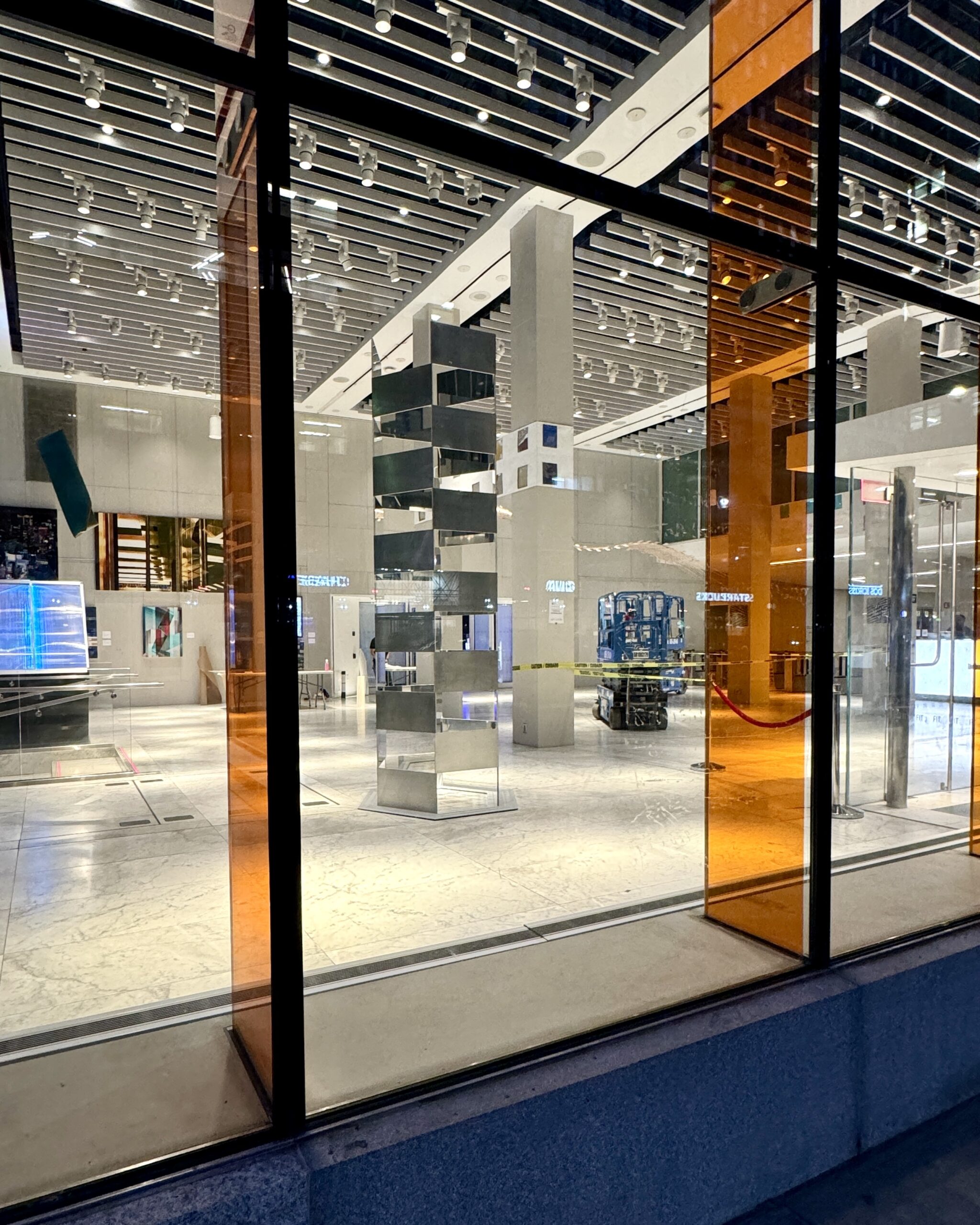
His recent installation The Mechanism of Seeing, included in a group exhibition, called Picturing Light at the Fashion Institute of Technology, showcases these principles. Positioned in a corner window at FIT, the 12-foot-tall sculpture captures reflections of the bustling street outside, while also reflecting the gallery’s interior. As viewers move around the piece, they encounter shifting reflections of both the city and themselves, prompting a dialogue between the artwork and its context. Howe describes the experience:
“Sometimes the sculpture is almost invisible; other times, it’s very clear in terms of its presence. It’s definitely an urbanistic piece.”
Ultimately, Howe seeks to inspire a deeper connection with perception, prioritizing engagement over specific emotional responses. “Some will pass by and not fully understand, while others will engage deeply. My intention is to encourage active participation in experiencing the piece. In today’s art scene, many viewers are passive, looking to be entertained. My work invites people to notice details they might overlook, ultimately enhancing their awareness of the world around them. I hope they are left in awe of seeing itself.” he explains.
Balancing his dual roles as an architect and artist requires significant mental agility. “Switching between the two can be tricky,” he admits, and continues “While I’m good at managing my time and staying disciplined, it doesn’t always align perfectly,” as the administrative nature of architecture often contrasts with the creative freedom of art.
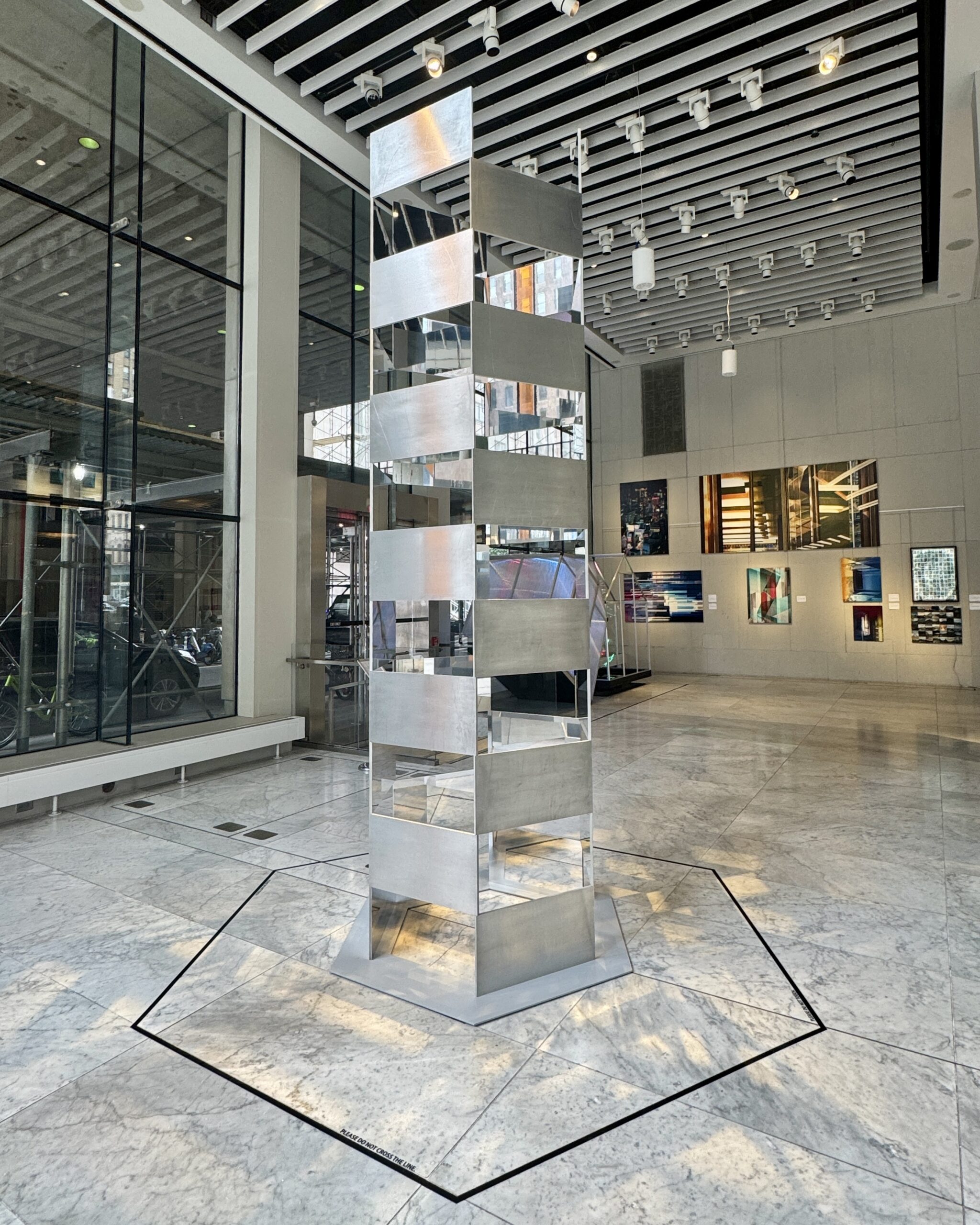
After earning his degree from Cornell and working in the architectural field in New York, he felt constrained by the slow pace of creative experimentation in architecture. In his late 20s, he began painting as a means to express his ideas more quickly. Eventually, he returned to school to earn his master’s degree at Hunter College in 1999, all while managing a growing architecture practice focused on residential renovations.
Throughout the 2000s, his architecture practice expanded, focusing on apartment renovations and new houses in the Hamptons. While these projects allowed for creativity, they didn’t quite push the boundaries he yearned for. When he moved to Los Angeles twelve years ago, he established a studio in Culver City where he began fabricating tables— a result of his lifelong love for industrial and furniture design.
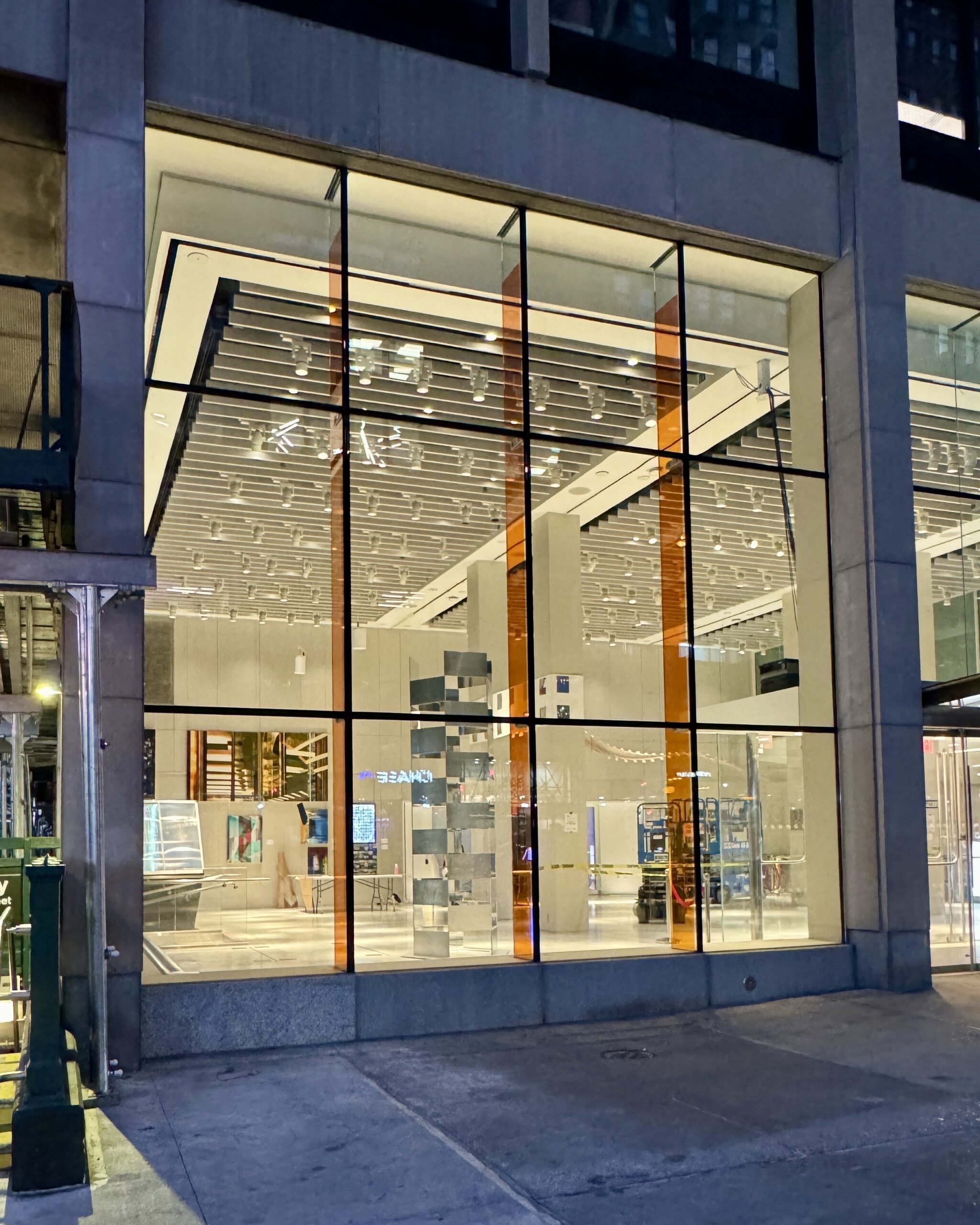
As he began the fabricating process, Howe encountered leftover materials that he didn’t want to waste. He started cutting them into two-inch strips, discovering a minimalist quality that intrigued him. Stacking these strips led to the development of his stacking sculptures, which have a distinctly architectural nature. Over the past eight years, he has refined these pieces into what he describes as “seeing devices.”
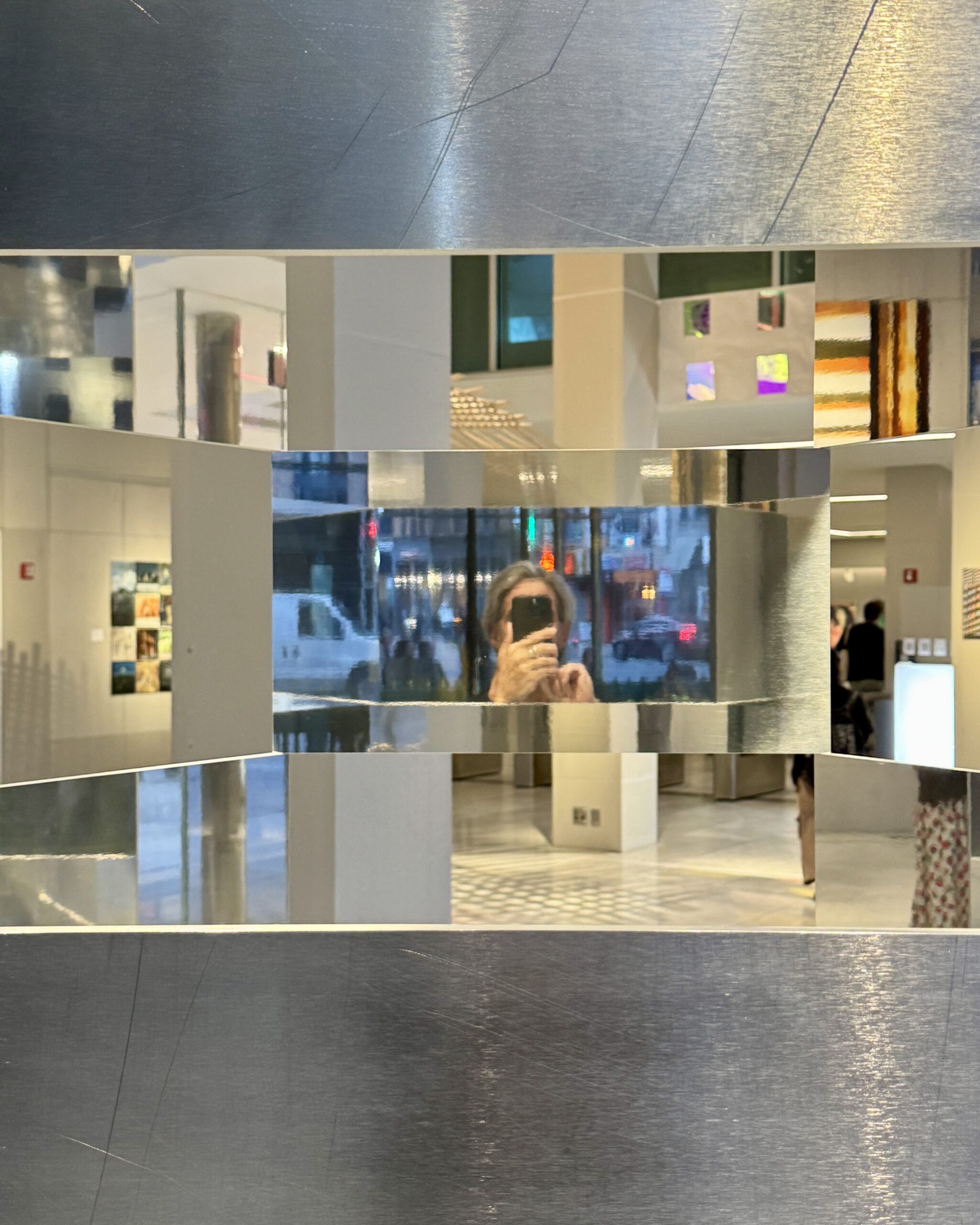

Looking ahead, Howe envisions his work continuing to evolve while remaining rooted in the principles of perception and space.
“While the three-dimensional aspect may change or expand, I believe the stacking methodology will remain central. There will be offshoots generated from this physical work as I continue to explore perception and consciousness. I also enjoy site-specific work, which generates new ideas and challenges,” he reflects.
The Mechanism of Seeing is currently on display at FIT in New York, running through October 27. To discover more about Seth Howe and his work, please visit his website here.
